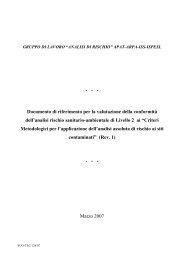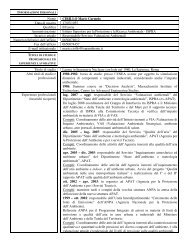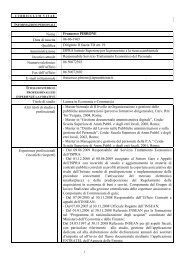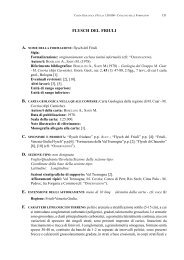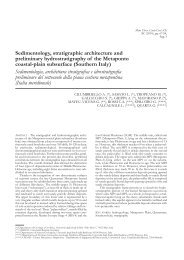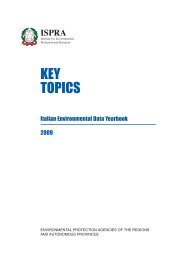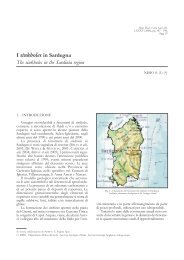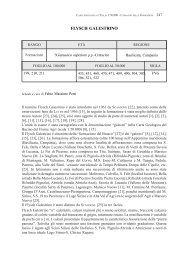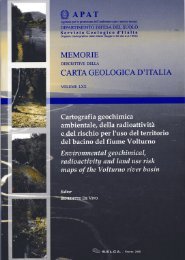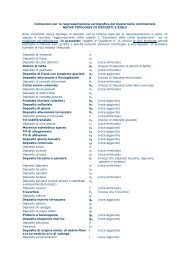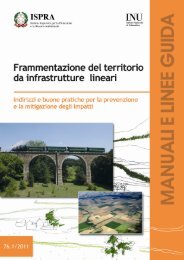Guidebook - Ispra
Guidebook - Ispra
Guidebook - Ispra
Create successful ePaper yourself
Turn your PDF publications into a flip-book with our unique Google optimized e-Paper software.
THE APULIA CARBONATE PLATFORM-MARGIN AND SLOPE, LATE JURASSIC TO<br />
EOCENE OF THE MAIELLA MT. AND GARGANO PROMONTORY:<br />
PHYSICAL STRATIGRAPHY AND ARCHITECTURE P18<br />
Figure 3.4.3 - Clinostratifi ed thick beds with a planar surface. On top of the outcrop many coral rudstone to fl oatstone<br />
occur in a massive body of about 10-15 m above an exposure surface (Bosellini & Neri, 1995; Adams et al, 2002). This<br />
small “reef” could be the result of a relative sea-level lowstand and testify the only area where Eocene shallow-water<br />
carbonates crop out in the Gargano.<br />
succession. Later, some features of the Monte Acuto<br />
Fm will be examined (Stop 4.3). Finally, we will visit<br />
the CO.L.MAR quarry, where the peritidal cycles<br />
with many dinosaur footprints of the San Giovanni<br />
Rotondo Limestone crops out (Stop 4.4).<br />
Stop 4.1a:<br />
Panoramic view of the scalloped margin<br />
The large-scale stratigraphic relationships of<br />
the scalloped margin will be observed from<br />
the Manfredonia-Belvedere di Ruggiano road<br />
Figure 4.1.1 - Lateral relationships between the platform facies of the Monte Spigno Fm (MSF) and the Monte S.<br />
Angelo Fm (MSA). The unconformable surface separating the two units is a complex erosional surface onlapped by the<br />
megabreccia bodies of the Monte S. Angelo Fm and in the upper part by the thick calciturbidites of the Monte Acuto Fm<br />
(SS – San Salvatore member). f, main faults; a-a’, trace of stratigraphic section of Figure 4.1.3 (after Bosellini et al.,<br />
1993, 2000).<br />
33 - P18<br />
Volume n° 3 - from P14 to P36



